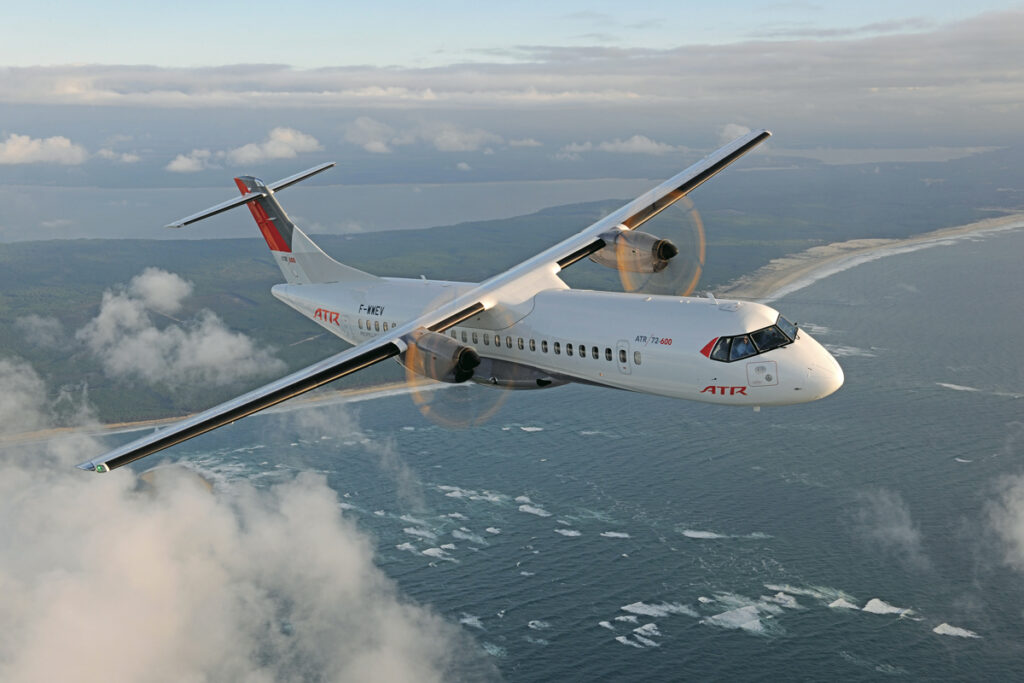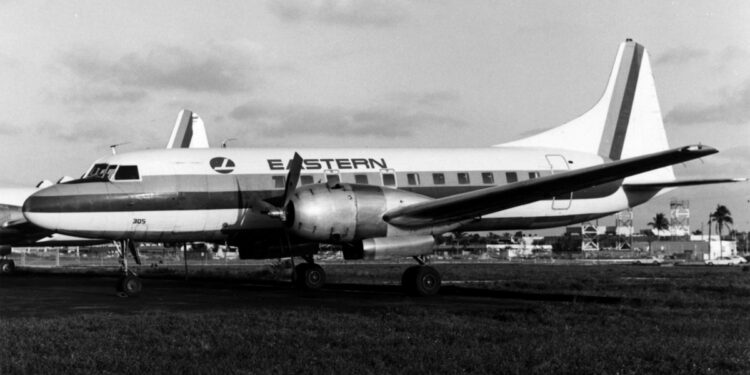┬аMedium-Capacity Regional Airliners
Aircraft in this class generally featured jet-equivalent comfort, consisting of three- or four-abreast seating, stand-up headroom, small galleys and lavatories, cabin pressurization (with the exception of the Shorts 330 and 360), and flight attendant service, and enabled carriers to operate routes on which demand merited their capacity of between 30 and 40 passengers.
Powered by Pratt and Whitney of Canada PW118 turboprops and sporting a t-tail, the Brazilian-made Embraer EMB-120 Brasilia often fed major airline hubs in the U.S. under the Delta Connection, Continental Express, and United Express banners.┬а The type wore the colors of ASA in Atlanta and Comair in Orlando, both Delta Airlines strongholds.
The 34-seat Saab 340, which began as a joint venture with FairchildтАФand saw its wings initially produced in a factory at Farmingdale, Long IslandтАЩs Republic AirportтАФwas a Business Express, Comair, and Shuttle America workhouse.
Northwest Airlink carriers Express Airlines 1 and Mesaba operated significant numbers of the type.
тАЬAt the time of the Delta merger, Mesaba was operating 49 examples of the Saab 340 out of all three Northwest hubs,тАЭ according to the Northwest History Center.┬а тАЬAs Delta closed the Memphis operation, some of these aircraft even moved to Atlanta to replace ATR72 flights.тАЭ┬а

Large-Capacity Regional Airliners
Accommodating 50 or more passengers in considerable, four-abreast comfort, these aircraft mostly included advanced, stretched versions of earlier designs.
The high-wing, Pratt and Whitney of Canada PW125B-powered Fokker 50, for instance, was a longer-fuselage variant based upon the first-generation Fokker F.27 Friendship, and saw widespread service in Europe with the likes of Aer Lingus Commuter, which dubbed it the тАЬnifty fifty,тАЭ Air Nostrum of Spain, Air UK, Austrian Air Services, and KLM CityHopper.┬а Icelandair regularly connected ReykjavikтАЩs downtown Airport with Kulusuk in Greenland, touching down on its single gravel air strip after approaching it over fjords and pack ice.
The British Aerospace BAe-ATP Advanced Turbo-Prop was a second-generation, 64- to 72-passenger version of the earlier and smaller Hawker Siddeley HS.748.┬а Its major European operators included BA Citiexpress, British Midland, British Regional, Loganair, Manx Airlines, and West Air of Sweden.
Saab offered the stretched, 50-seat S-2000 powered by Allison AE 2100A engines that drove slow-turning, six-bladed propellers to reduce internal and external noise, and it achieved a maximum cruise speed that was some 100 knots higher than that of the smaller Saab 340 from which it was derived. Crossair of Switzerland was its launch customer.
As the ultimate-rendition of the ATR 72, the ATR 72-600 featured the specialized Armonia cabin, created by Italian designer Giugiaro, with a new air management system, lightweight seats, LED lighting, accommodation for up to 78, and provision for inflight Wi-Fi connectivity.┬аThe basic ATR72 was the last turboprop regional airliner to remain in American EagleтАЩs fleet.┬а
Dying Breed
After decades of reliable and economical operation, low-, medium- and high-capacity regional turboprop airliners such as these reached the end of their certified service lives and were progressively replaced by the new breed of regional jets.
тАЬThe regional jet allows a carrier to begin new nonstop service to smaller markets, to complement or replace existing mainline jet services, and to complement or replace тАШlong-haulтАЩ turboprop service,тАЭ according to James Ott in his тАЬRegionals Building at NationтАЩs HubsтАЭ article (Aviation Week and Space Technology,┬аMay 18, 1998).┬а
But, with regional jets built by Bombardier, Dornier, and Embraer, which accommodate between 32 and 100 passengers, and overwhelming customer preference for them, their once-dominant turboprop predecessors had been reduced to a dying breed.
As of 2024, the ATR42 and -72 were the only ones still being produced by their original equipment manufacturer (OEM), although orders had been reduced to a trickle, and no replacements were in sight.
Source link : http://www.bing.com/news/apiclick.aspx?ref=FexRss&aid=&tid=66e8406b40cb464694c4b751a170962e&url=https%3A%2F%2Fmetroairportnews.com%2Fdying-breed%2F&c=11821352815544217732&mkt=en-us
Author :
Publish date : 2024-09-16 02:59:00
Copyright for syndicated content belongs to the linked Source.












